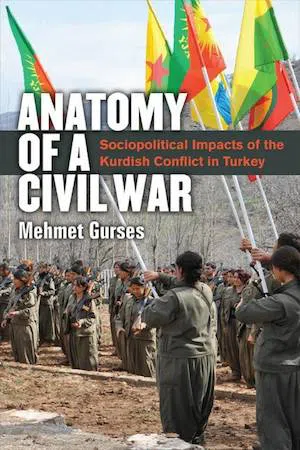![]()
Part I
![]()
One
The Dark Side of War
Civil war has replaced interstate conflict as the most frequent and destructive form of warfare in the post–World War II era (Eriksson, Wallenstteen, and Sollenberg 2003; Fearon and Laitin 2003). Civil conflicts have caused millions of casualties, destroyed infrastructure, disrupted production and trade, threatened external markets (Collier 1999; Bayer and Rupert 2004; Murdoch and Sandler 2004; Kang and Meernik 2005), generated environmental degradation (Etten et al. 2008; Brauer 2009; Rueveny, O’Keef, and Li 2010; Gurses 2012), and forced many from their homes (Collier et al. 2003; Moore and Shellman 2004).
In addition to these direct and immediate consequences, scholars have also pointed out indirect and long-term effects of civil war. In a cross-national analysis, Ghobara, Huth, and Russet (2003) identify lingering effects of civil war on public health and conclude that conflict is especially harmful to women and children. Iqbal (2006) reaches a similar conclusion that conflict undermines public health through damaging infrastructure, interrupting access to basic services, and disrupting agricultural production.
Chamarbagwala and Moran (2011, 43), utilizing data from Guatemala’s thirty-six-year civil war (1960–96), examine the impact of the conflict on education and find that internal armed conflict has detrimental effects on human capital accumulation for the most vulnerable demographic groups, rural Mayan males and females. Lai and Thyne (2007, 289), using cross-sectional time series data for all states between 1980 and 1997, demonstrate that “civil wars are likely to reduce educational expenditures as well as educational enrollments across all levels.”
A range of psychosocial problems, including suicide, alcoholism, posttraumatic stress disorder, sleep disorders, child neglect, and overwhelming feelings of hopelessness as a result of exposure to violence, have been identified in numerous countries such as Afghanistan (Scholte et al. 2004), Cambodia (Sack, Clarke, and Seeley 1996), Rwanda (Pham, Weinstein, and Longman 2004), Sri Lanka (Somasundaram 1998), and Israel (Palmieri et al. 2010).
The case studied here is no exception. In addition to the human costs associated with the PKK insurrection in Turkey, which at the time of this writing had produced about fifty thousand deaths,1 the Turkish state’s counterinsurgency measures, particularly the forced evacuation of more than three thousand villages in the Kurdish countryside during the mid-1990s, resulted in a massive population displacement (Jongerden 2007). According to one account nearly two million people were uprooted by 1995 because of this conflict (Cohen and Deng 1998, 48). By the end of the 1990s, this number was estimated to be around four million (Jongerden 2001; McDowall 2004). A report by the International Crisis Group cites at least 2,798 confirmed deaths between July 20, 2015, and May 14, 2017.2 This surge in violence since July 2015 has also resulted in more than 350,000 internally displaced persons and massive urban destruction in some southeastern districts (Mandiraci 2016).
These numbers might at first glance seem to be proportionally low when compared to other conflicts. For example, according to a report by Human Rights Watch, five decades of conflict between the Revolutionary Armed Forces of Colombia (Fuerzas Armadas Revolucionarias de Colombia, FARC) and successive Colombian governments has forcibly displaced nearly six million people, amounting to 13 percent of the total population and generating the world’s second largest population of internally displaced persons (IDPs).3 In El Salvador, the twelve-year civil war (1980–92) took nearly 2 percent of the total population and displaced another 10 percent (Wood 2003, 2008).
In contrast to these cases, the Kurdish conflict, due mainly to its ethnic character, has been primarily confined to the Kurdish-dominated eastern regions of Turkey. Estimating the exact human costs of the conflict thus requires controlling for this geographical and demographic aspect. The total population of twenty-five provinces that hosted the conflict or were impacted by it in one form or another was about seventeen million people as of 2015.4 Thus, four million IDPs constitute approximately 25 percent of the total population of seventeen million. In other words, the three decades of armed conflict has dis...
